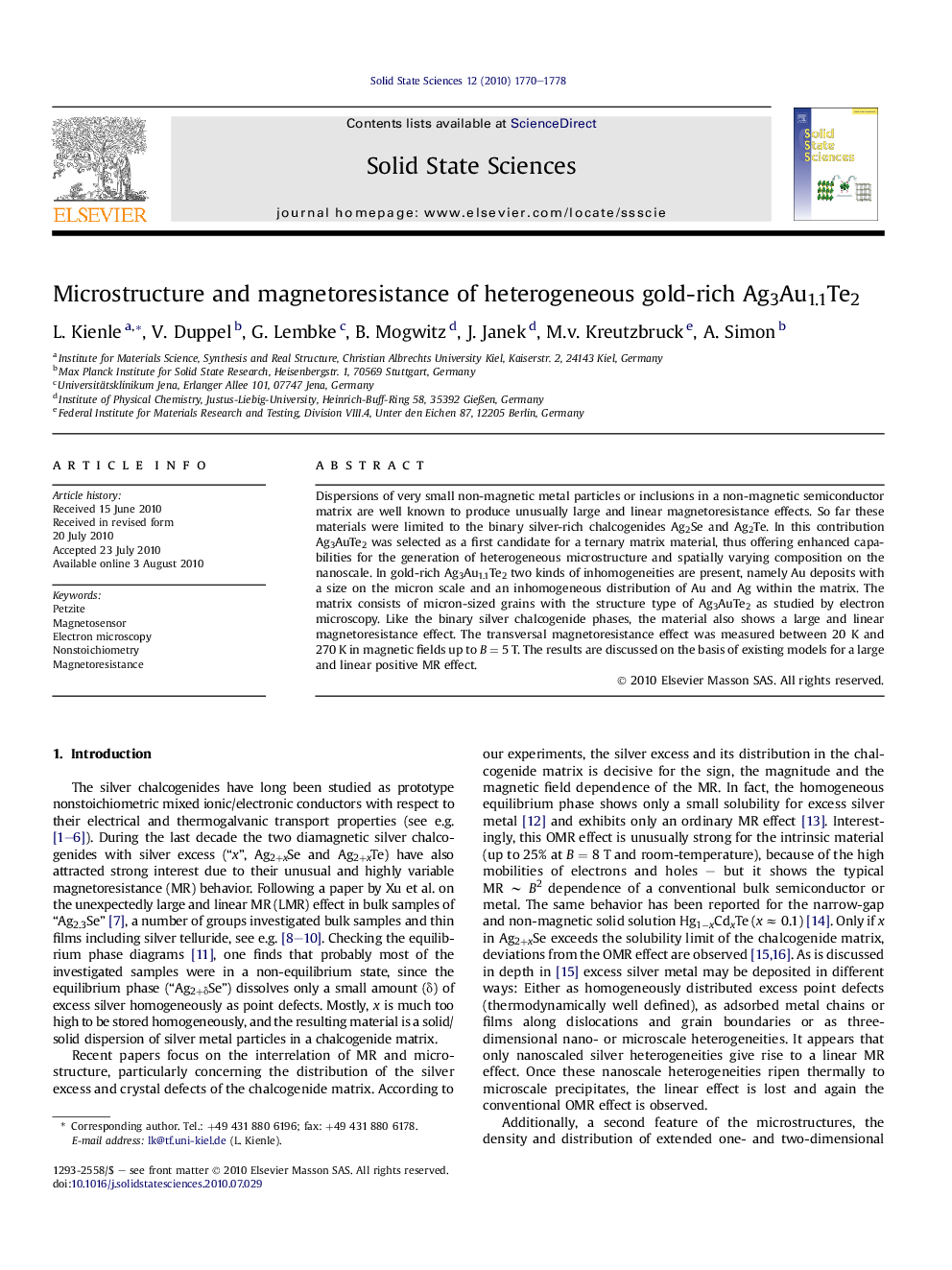| Article ID | Journal | Published Year | Pages | File Type |
|---|---|---|---|---|
| 1506161 | Solid State Sciences | 2010 | 9 Pages |
Dispersions of very small non-magnetic metal particles or inclusions in a non-magnetic semiconductor matrix are well known to produce unusually large and linear magnetoresistance effects. So far these materials were limited to the binary silver-rich chalcogenides Ag2Se and Ag2Te. In this contribution Ag3AuTe2 was selected as a first candidate for a ternary matrix material, thus offering enhanced capabilities for the generation of heterogeneous microstructure and spatially varying composition on the nanoscale. In gold-rich Ag3Au1.1Te2 two kinds of inhomogeneities are present, namely Au deposits with a size on the micron scale and an inhomogeneous distribution of Au and Ag within the matrix. The matrix consists of micron-sized grains with the structure type of Ag3AuTe2 as studied by electron microscopy. Like the binary silver chalcogenide phases, the material also shows a large and linear magnetoresistance effect. The transversal magnetoresistance effect was measured between 20 K and 270 K in magnetic fields up to B = 5 T. The results are discussed on the basis of existing models for a large and linear positive MR effect.
Graphical abstractFigure optionsDownload full-size imageDownload as PowerPoint slide
